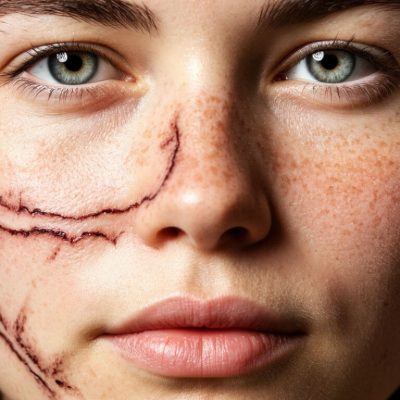Every morning we try to look our best: apply makeup, take care of our skin health, and choose a stylish look. But the double chin — that sneaky detail — can spoil even the most careful efforts. “Why can’t I get rid of my double chin?” This question is becoming more common, especially among those who watch their appearance, exercise, and try to lose weight. In this article, experts share the three main causes of a double chin and explain how to fix this problem without harming your health or appearance.
1. Puffiness under the Chin
One of the most common factors leading to a double chin is swelling of the soft tissues. How does this happen?
The area under the chin tends to accumulate fluid. It’s like a “pocket” for excess fluid. The lymph nodes in the neck and chin area drain lymph from the face. When lymphatic drainage is impaired — due to inflammation, stress, or fluid retention — lymph cannot leave the chin area and begins to build up.
Causes of chin puffiness:
- Excess weight. Fat tissue in the chin area retains water, contributing to swelling.
- Filler injections. Using hyaluronic acid or other fillers can disrupt lymph flow, worsening puffiness.
- Water-salt balance disorders. Frequent salt consumption causes fluid retention in the body.
What to do to reduce puffiness:
- Reduce salt intake. Limit salt to 5 grams per day; avoid fast food, canned goods, and high-salt products.
- Stay active. The lymphatic system works better with physical activity. Regular walks, light jogging, or dancing help lymph drainage.
- Chin massage. Lymphatic drainage massage with gentle circular motions and pressure under the chin improves blood circulation and lymph flow.
2. Hypertonicity of Neck and Chin Muscles
Another common cause of a double chin is muscle hypertonicity. When neck and chin muscles are tense, they contract, causing the skin to stretch and sag.
Which muscles can be hypertonic?
- The omohyoid muscle. It participates in swallowing and jaw movement. When tense, it pulls tissues down, creating a double chin effect.
- Platysma. This muscle wraps around the neck and helps move the lower jaw. When tight, the skin sags, leading to a double chin.
How to relax muscle hypertonicity:
- Monitor posture. Slouching increases strain on the neck and shoulder area, provoking muscle spasms. Strengthening posture and doing back exercises help avoid this.
- Gadget use. When using phones and computers, maintain proper posture to avoid overstraining neck muscles.
- Relaxation massage. Massage the neck and chin area to relieve muscle spasms and improve circulation. Warm the skin first, then gently massage and pinch the muscles.
3. Age-Related Changes
Aging also contributes to the formation of a double chin. As we age, the skin loses elasticity due to decreased collagen and elastin production. This causes tissues to lose support and the skin to sag, forming a double chin.
How to prevent age-related double chin:
- Stimulate blood circulation. To activate collagen and elastin production, improve circulation with light outdoor walks, regular massages, and facial exercises.
- Improve nutrition. Include foods that support collagen production: meat, fish, nuts, citrus fruits, broccoli.
- Use peptides. Peptides like epidermal growth factor (EGF) help activate collagen synthesis and slow skin aging. Choose serums with these ingredients for regular care.
Conclusion
A double chin is not a sentence but simply a problem that can be solved. Proper care, massages, and lifestyle adjustments will help you not only get rid of the double chin but also improve your overall appearance. Remember that every action should be aimed at caring for your skin and muscle health. Maintaining good posture, an active lifestyle, balanced nutrition, and regular care are the keys to preserving beauty and youth.







